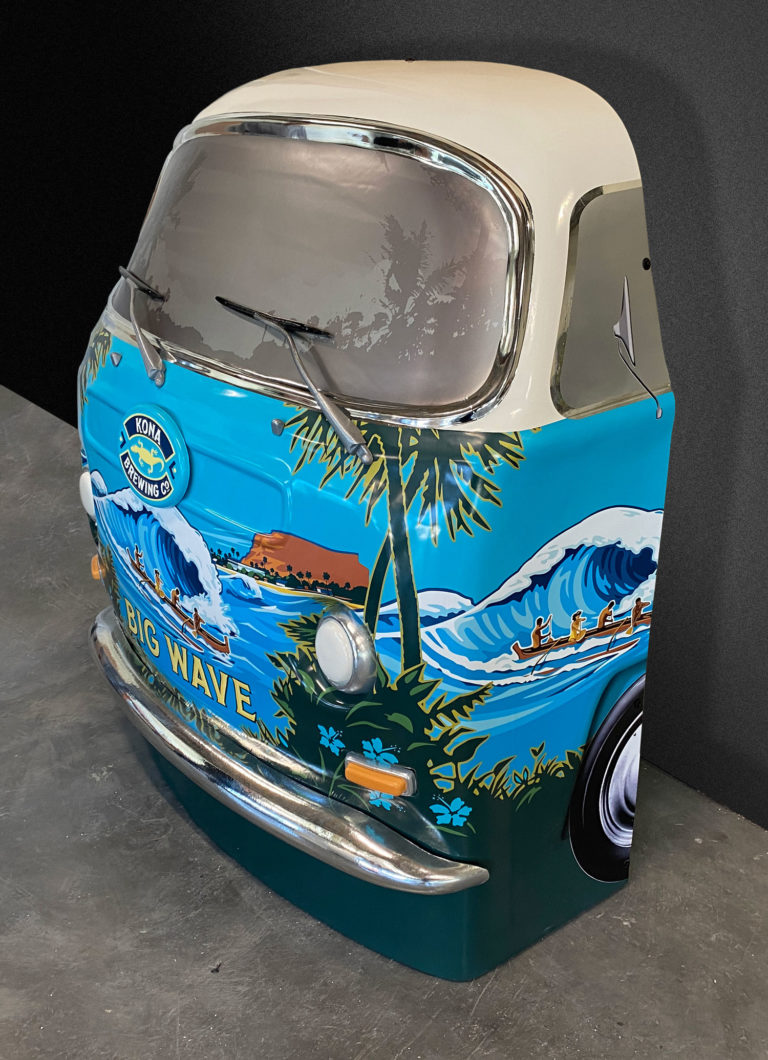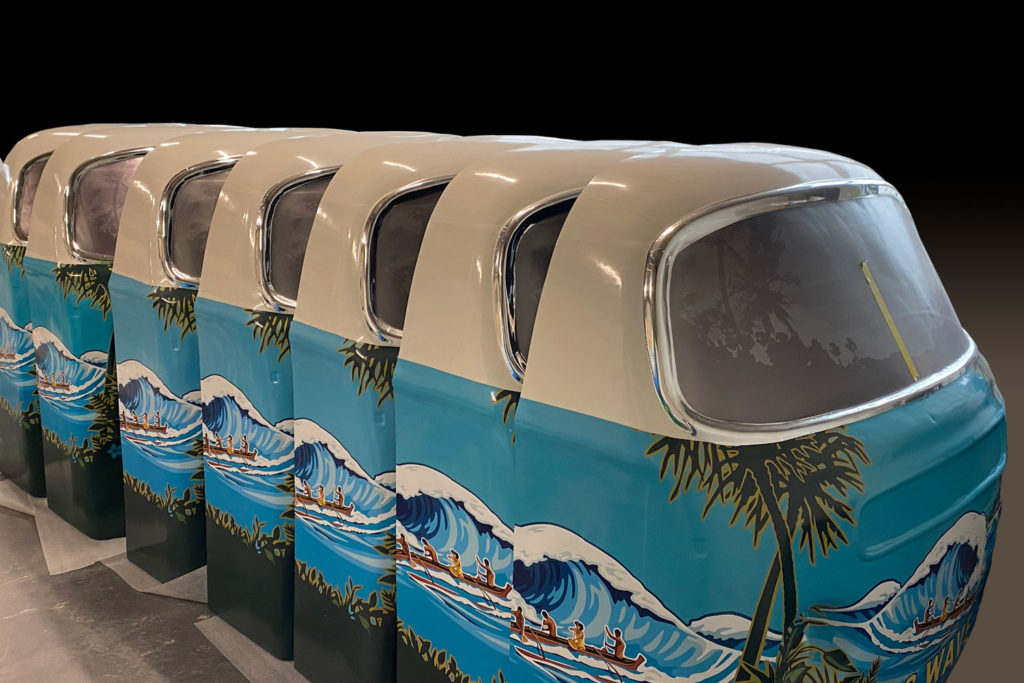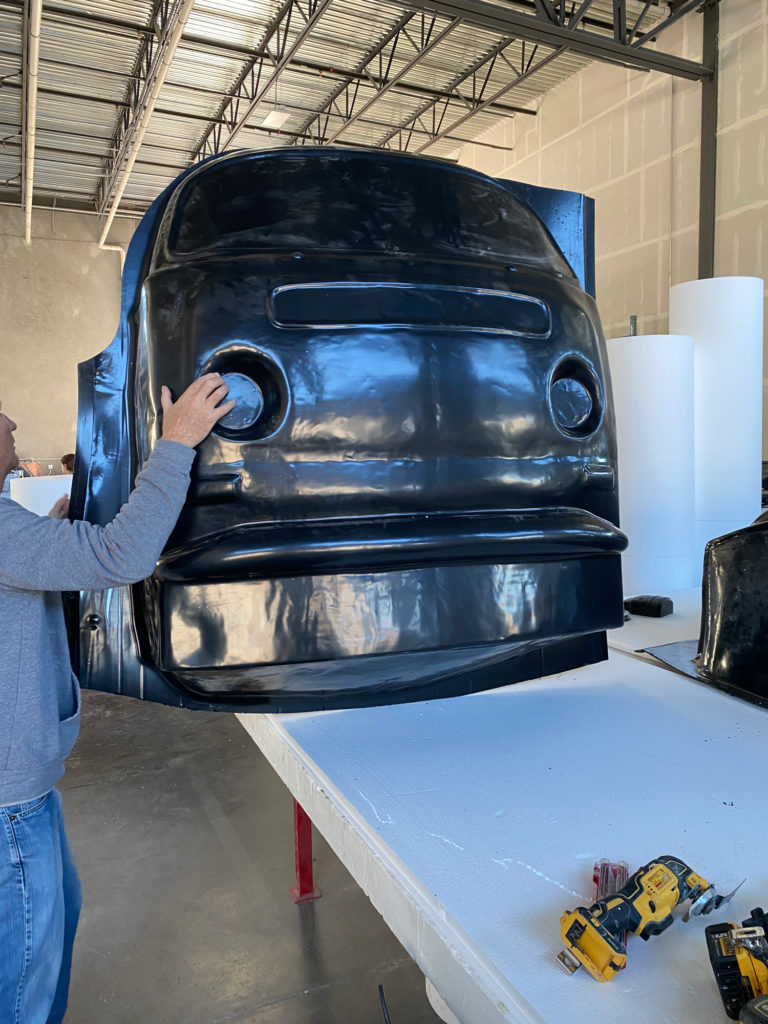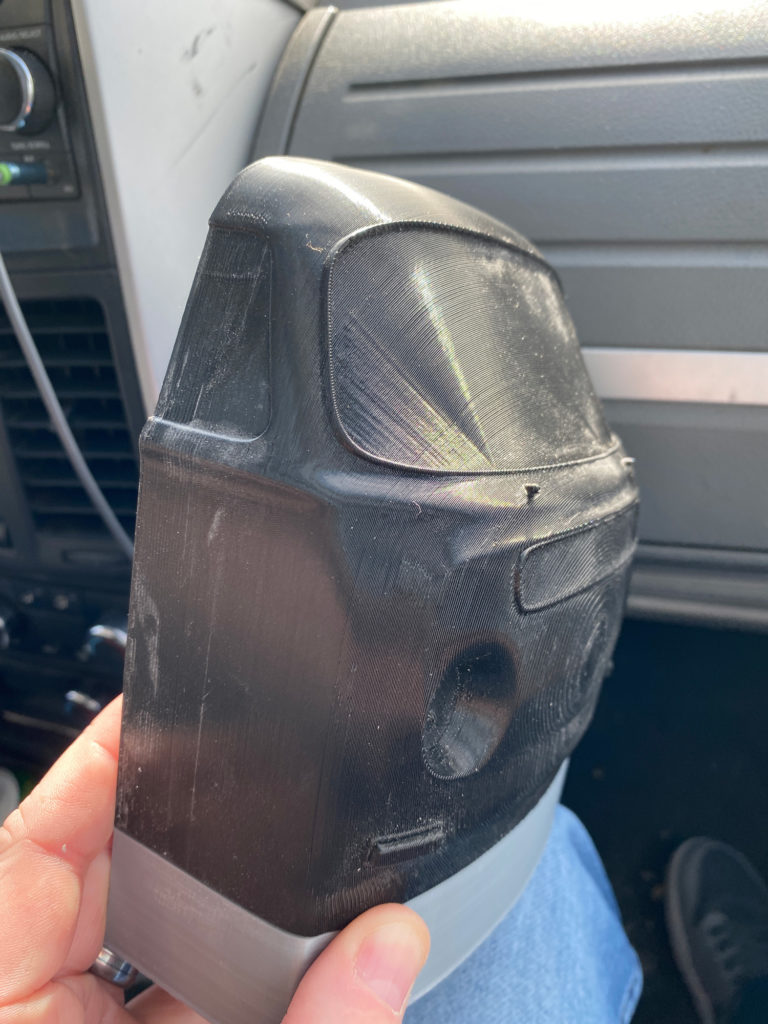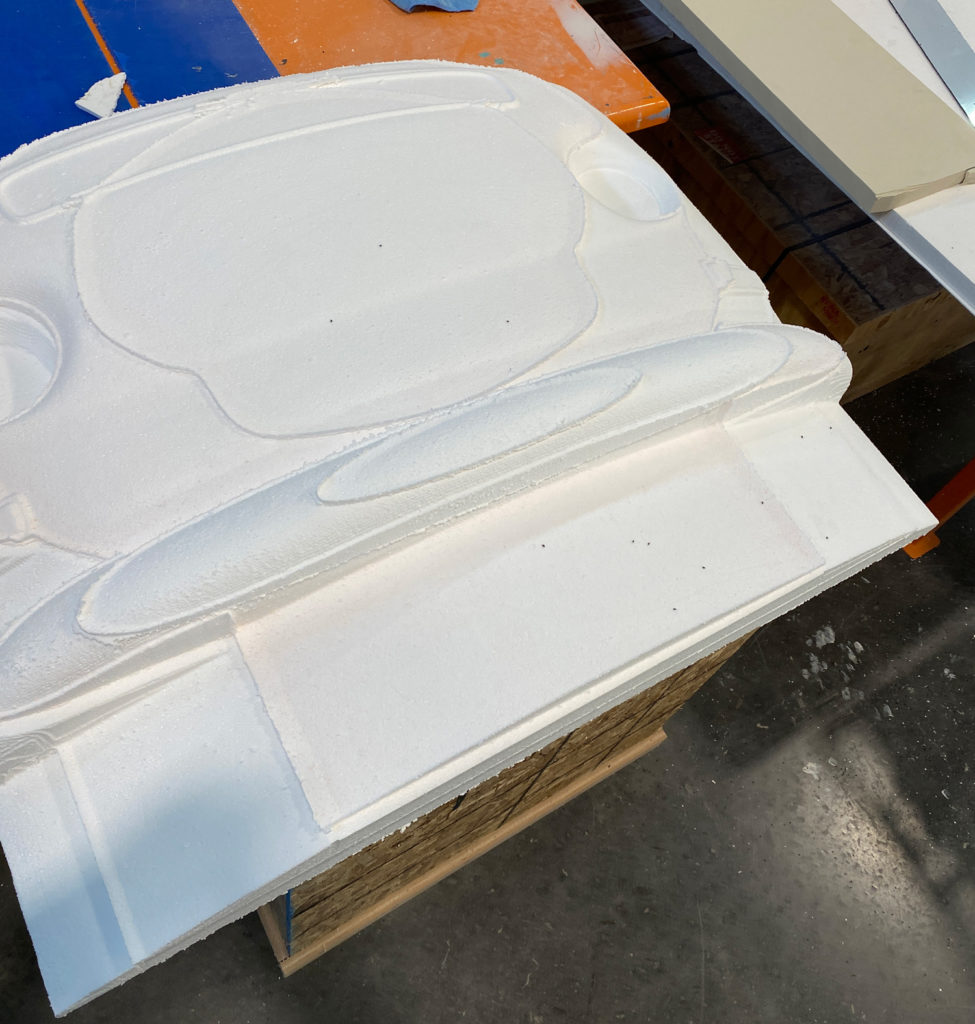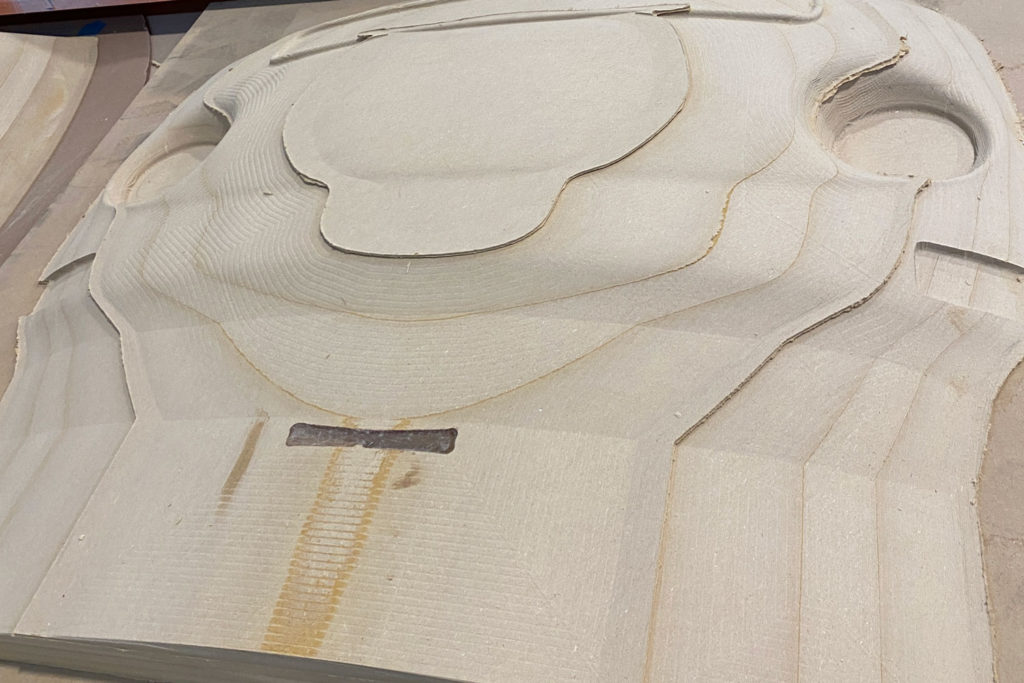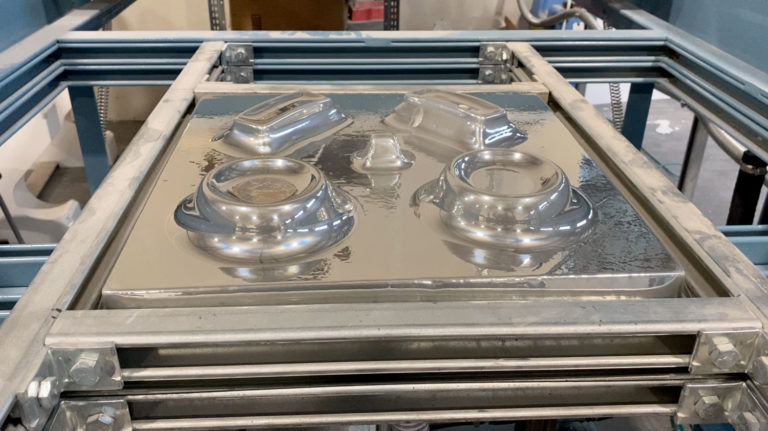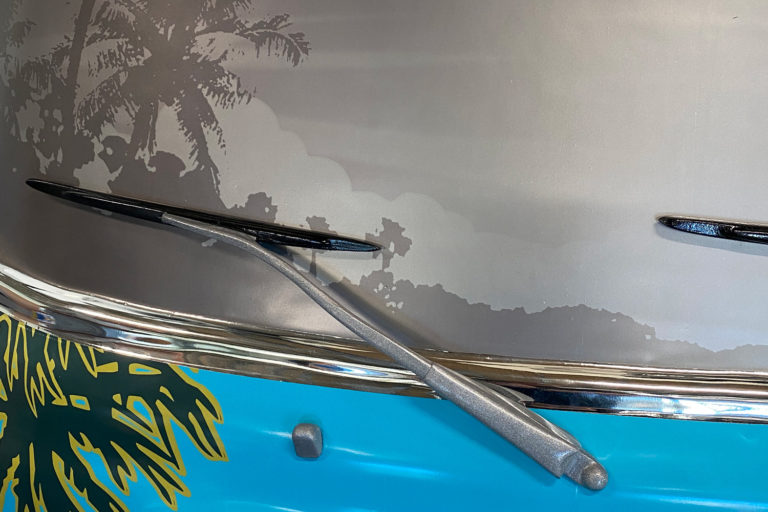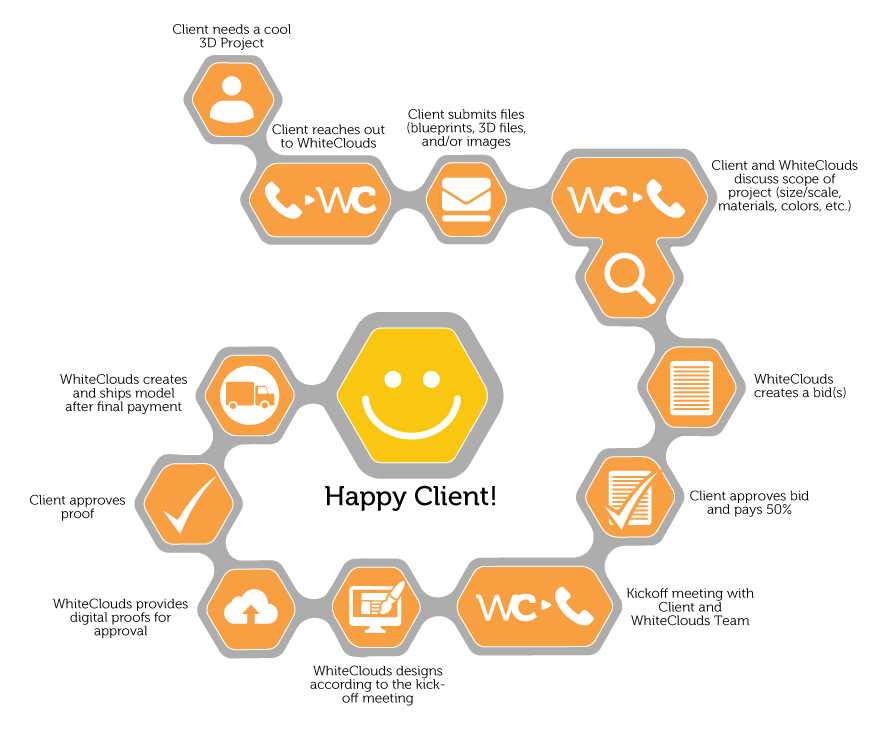KONA Brewing Co. VW Bus Case Study
Volkswagen Bus Indoor Retail Beer Display
Table of Contents
The Commission Story
WhiteClouds recently completed their most diverse project yet in terms of incorporating several of the various skills and technologies the company uses in 3D fabrication. The KONA “Liquid Aloha” VW Bus, made for the KONA Brewing Company and modeled after their own Volkswagen bus, required woodworking, CNC, large-draw thermoforming, foam-cutting, 3D printing, vinyl wrapping, and painting skills. This project also involved mass production, as we were commissioned to create not just one, but many identical KONA Bus fronts.
Normally one would find the original KONA VW Bus in California, where it was introduced. Custom painted to match the company brand, this special bus was fitted with two kegs of Kona Brewing Company’s special craft beer that can roll on out to festival events or simply serving thirsty surfers and swimmers by the beach.
Of course the KONA Brewing Company couldn’t bring this special bus everywhere, but they figured the next best thing was to place replicas of these bus fronts to be placed in storefronts all around. And although you can’t get fresh beer on tap from these buses, cases of KONA Brewing Company’s famous “Liquid Aloha” Big Wave Golden Ale will be stacked around these displays for customers to experience the beach vibes and Aloha Spirit on their shopping sprees.
Process of Design
As an indoor display, the bus fronts were expected to be handled quite roughly by customers and employees alike, so durability was essential. Being a replica, the bus also had to have all of the appearances of a working Volkswagen. This meant incorporating mirrors, washer fluid caps, blinkers, lights, bumpers, even windshield wipers. With all of these parts having to be mass produced, thermoforming and casting were the obvious choices for production. With casting and thermoforming, a template could be made and replicated and there would be little to no variation between products, drastically speeding up the process.
Thermoforming was chosen due to its many benefits which matched the requirements for the project. The process includes a mold being placed under plastic sheets that are heated up until they become pliable, where the mold is raised to push through and create an impression in the plastic, which quickly cools and hardens. Thermoforming is great for mass-production because it only requires the use of one mold to create many identical pieces. It is also great for large pieces, requiring minimal set time and little to no room for error.
Thermoforming also combined well with the ideal material for this project, ABS plastic. ABS Plastic, which is same stuff car bumpers are made of and commonly used in 3D printing, is an incredibly durable material. Durability was important because these products will be placed in a store and may be bumped or handled by customers or employees, not to mention having to withstand the weight of craft beer boxes being placed around it. Despite being incredibly durable, ABS plastic is also lightweight, making it easy for employees to move the display around when needed.
Construction
As with many of our more complex projects, a prototype was first created to make sure we received the company’s confirmation before moving ahead in the project. This is to ensure that the production team can work out any kinks, experimenting with what works, and refining the process to provide the best outcome. A small 3D-Printed prototype was first, then a full-size prototype was created as a short term mold. This initial temporary prototype was designed with the bumper and lights attached to the vehicle, but after a couple trial runs, our production team found that it was too much of a hassle to wrap the bumper with chrome while it was on the vehicle. Additionally, attaching the vinyl to the body of the car with the protruding elements would have been incredibly difficult. The revised final mold without bumpers and lights was created by CNC-ing it out of wood. The mold was then reinforced with high temperature resin so the wood wouldn’t degrade due to the high temperature and pressure of thermoforming. This ensured that every subsequent piece would look exactly like the very first piece, without the risk of accidental deformity or error.
Some of the elements of the bus such as the logo, bumpers, and lights were thermoformed separately and attached to the body at a later time. The chrome-shine on the bumper and parts surrounding the lights was created by attaching a chrome vinyl on top of the plastic, which was then thermoformed onto the smaller molds, creating that uniform shiny, metallic look. Other, more detailed elements such as the wipers and antenna holder master were first 3D-printed to make sure that everything remained detailed. After some revisions, more permanent silicone molds were created from the 3D printed models and then the final pieces were cast in plastic. These smaller, more detailed elements were created in a mold rather than thermoformed to provide that greater detail and because they had a 360º overhanging portion rather than a simple raised 3D appearance. The side mirrors were printed onto the vinyl, since damage might occur to parts that stuck out of the main body.
Finishing Process
After all of the pieces were thermoformed, the finer details were added using vinyl. Similar to how one would wrap an actual vehicle, a vinyl wrap was created using the design provided by the company. The benefits of vinyl include paint protection, easy wrapping, low maintenance, and it is extremely flexible. The larger body of the vehicle as well as the smaller elements were all individual vinyl wrapped. The logo was also separately vinyl wrapped and then everything was attached to the vehicle. The small windshield wiper blades, the most fragile component of the model, were painted with automative paint to give it higher durability and a shinier gloss.
The finished buses were each 48” W x 54” H x 24” D. When finished, they were separately wrapped and shipped off to their various locations to be installed, bringing their “liquid aloha” and Hawaiian spirit to the community!
